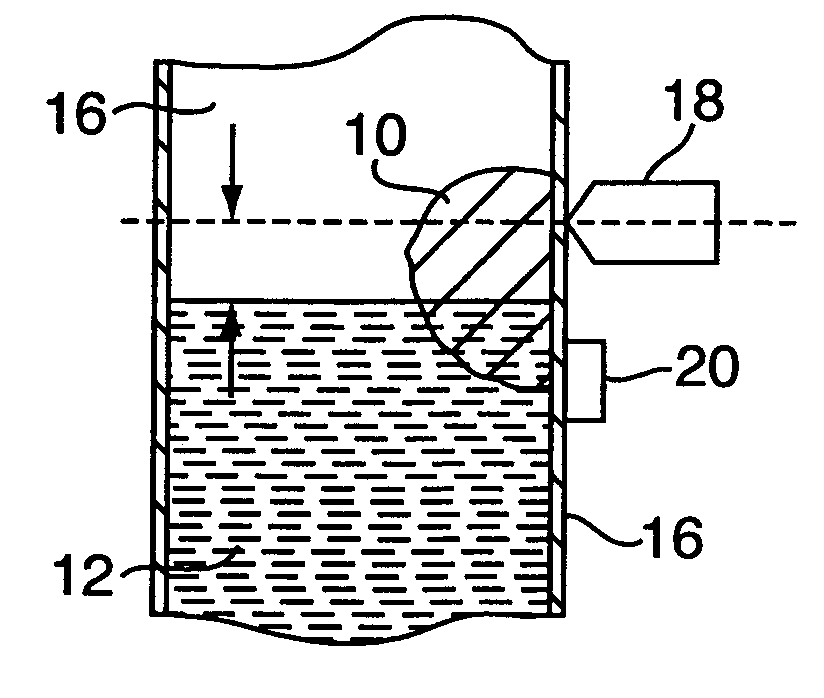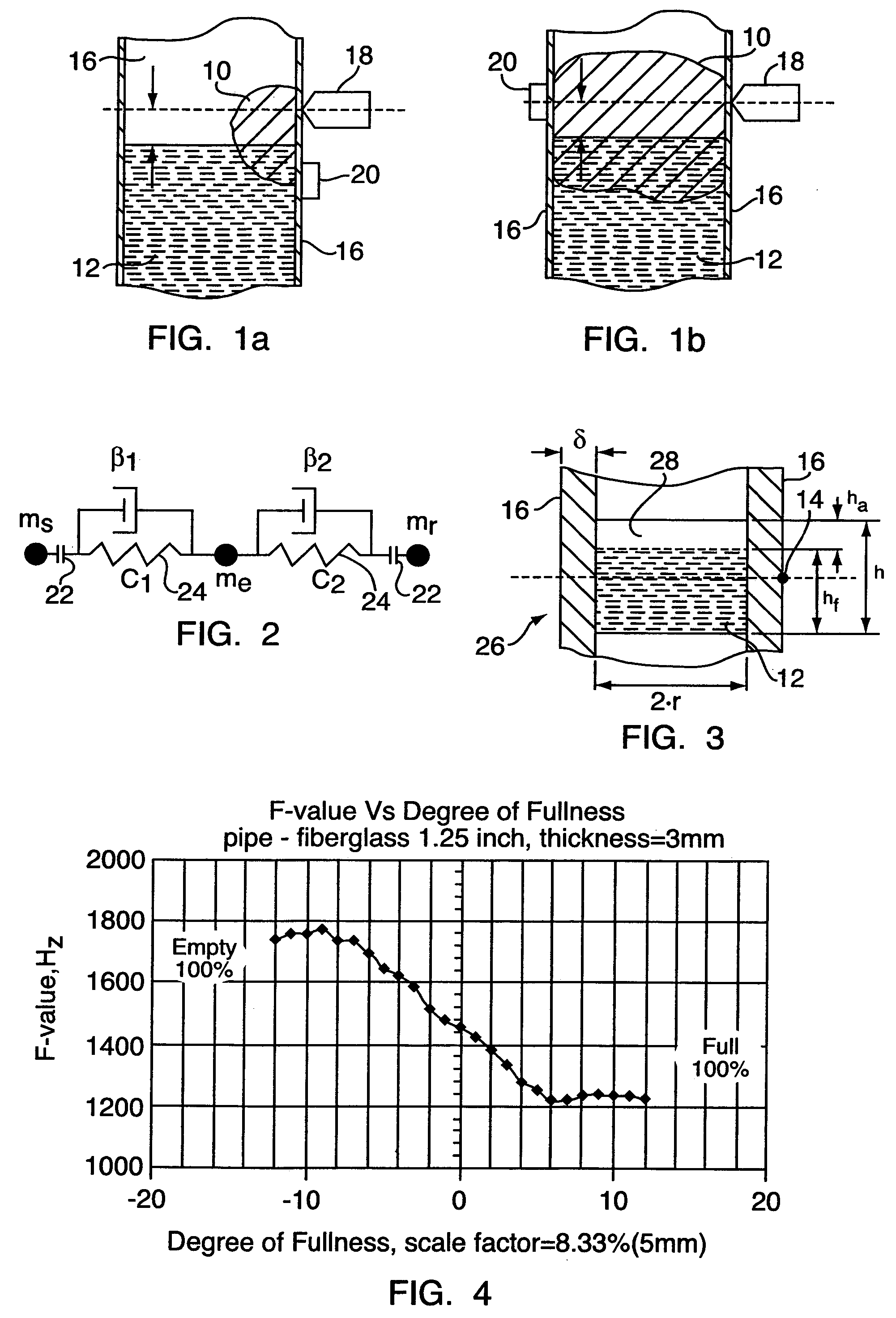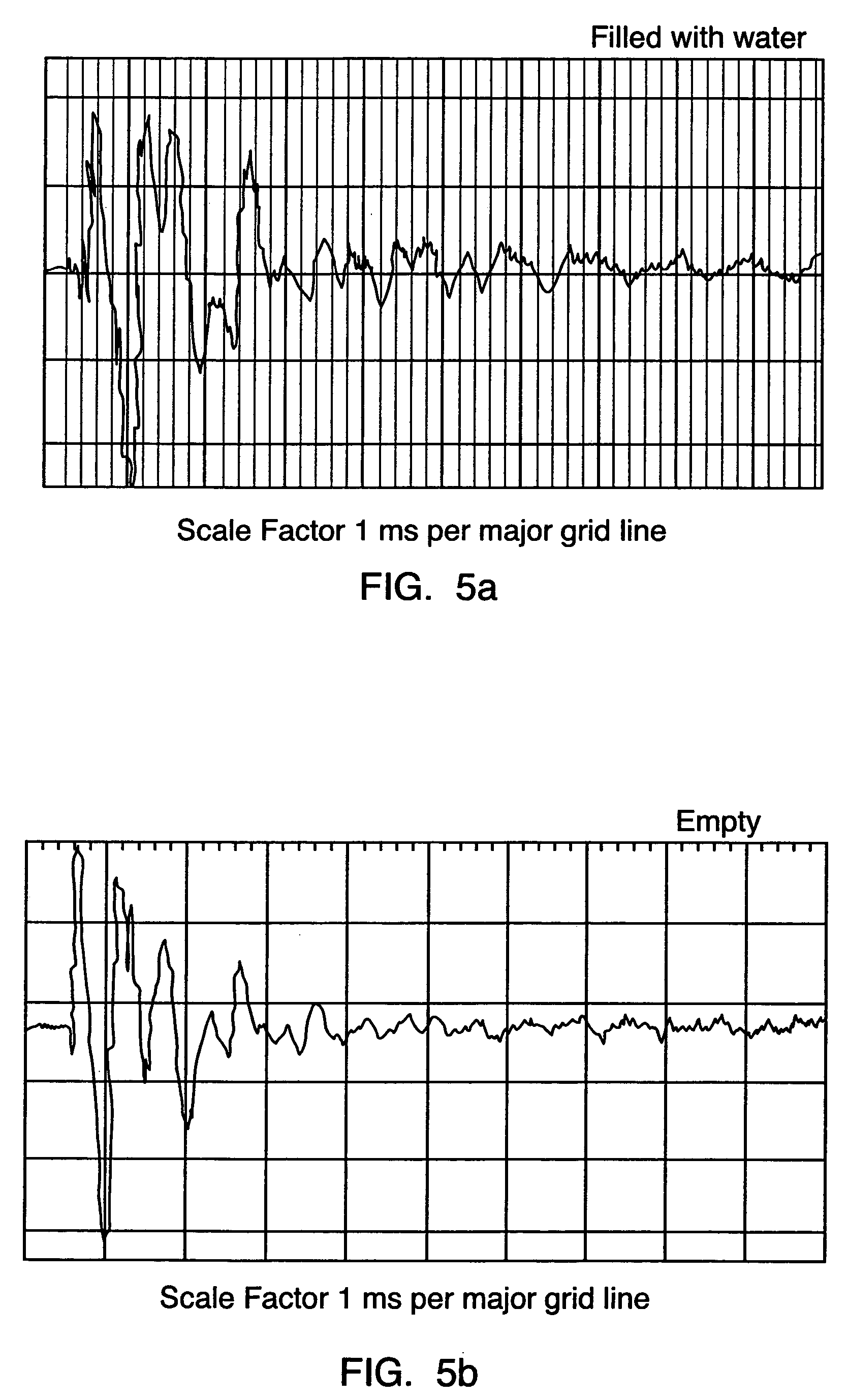Non-invasive method for detecting and measuring filling material in vessels
a filling material and non-invasive technology, applied in the direction of instruments, machines/engines, using reradiation, etc., can solve the problems of limited application of gravitational systems, system inability to continuous level measurement, limited non-invasive methods, etc., and achieve high repeatability and high measurement accuracy
- Summary
- Abstract
- Description
- Claims
- Application Information
AI Technical Summary
Benefits of technology
Problems solved by technology
Method used
Image
Examples
case 1
wherein cm denotes the speed of sound in the medium; and x denotes the distance to the first of the wave antinodes. With x=25.4 mm, the following acoustical standing wave frequencies were calculated:[0140] Pipe is empty.[0141]ca=331.8 m / s, f=6,531.5 Hz.[0142]Case 2: Pipe filled with water.[0143]cfl=1461.0 m / s, f=28,759.8 Hz.[0144]Case 3: Pipe filled with granulated material[0145]cg=500.0–1,000.0 m / s, f=9,842.5–19,685.1 Hz.
[0146]The value of the effective height he is not constant. It depends on many factors in addition to those that have already been discussed. In fact, he is a random variable, as is the effective mass me. The stochastic nature of the instantaneous effective mass in the studied mechanical system complicates the level measurement. In order to improve the accuracy and repeatability of this measurement, we have equipped the measuring system with two brackets (not shown). The brackets create predictable and stable boundary conditions for mechanical oscillations in the v...
first embodiment
[0163]Various variables may be selected to serve as the evaluating variable that is calculated in step (d) of the BMP. In a first embodiment, the evaluation variable ψ(t) may be the average of the frequencies within a predetermined amplitude range:
[0164]{∀Ai∈[A1,A2],i=1,n_}&t>t0⇒ψ(t)=n-1∑i=1i=nfi(13)
wherein, [A1, A2] denotes a predetermined amplitude range satisfying the criterion of undisturbed vibration processing; n denotes the number of vibration frequencies fi determined on condition that ∀Ai∈[A1, A2], i=1,n & t>t0; t0 denotes the moment of time when the load has been applied.
second embodiment
[0165]In a second embodiment, the evaluation variable may be the summation of the sine of the full periods of oscillation within a predetermined frequency range.
[0166]{∀ωi∈[ω1,ω2],i=1,m_}&t>t0⇒ψ(t)=∑i=1i=msin(Ti)|Ai∈[A1,A2](14)
wherein, [ω1, ω2] denotes a predetermined frequency range satisfying the criterion of the mechanical standing waves non-generation; m denotes the number of full periods of oscillation determined on condition that {∀ωi∈[ω1, ω2], i=1,m} & t>t0; and Ti denotes the i-th full period of oscillation observed beginning the moment t0.
PUM
 Login to View More
Login to View More Abstract
Description
Claims
Application Information
 Login to View More
Login to View More - R&D
- Intellectual Property
- Life Sciences
- Materials
- Tech Scout
- Unparalleled Data Quality
- Higher Quality Content
- 60% Fewer Hallucinations
Browse by: Latest US Patents, China's latest patents, Technical Efficacy Thesaurus, Application Domain, Technology Topic, Popular Technical Reports.
© 2025 PatSnap. All rights reserved.Legal|Privacy policy|Modern Slavery Act Transparency Statement|Sitemap|About US| Contact US: help@patsnap.com



